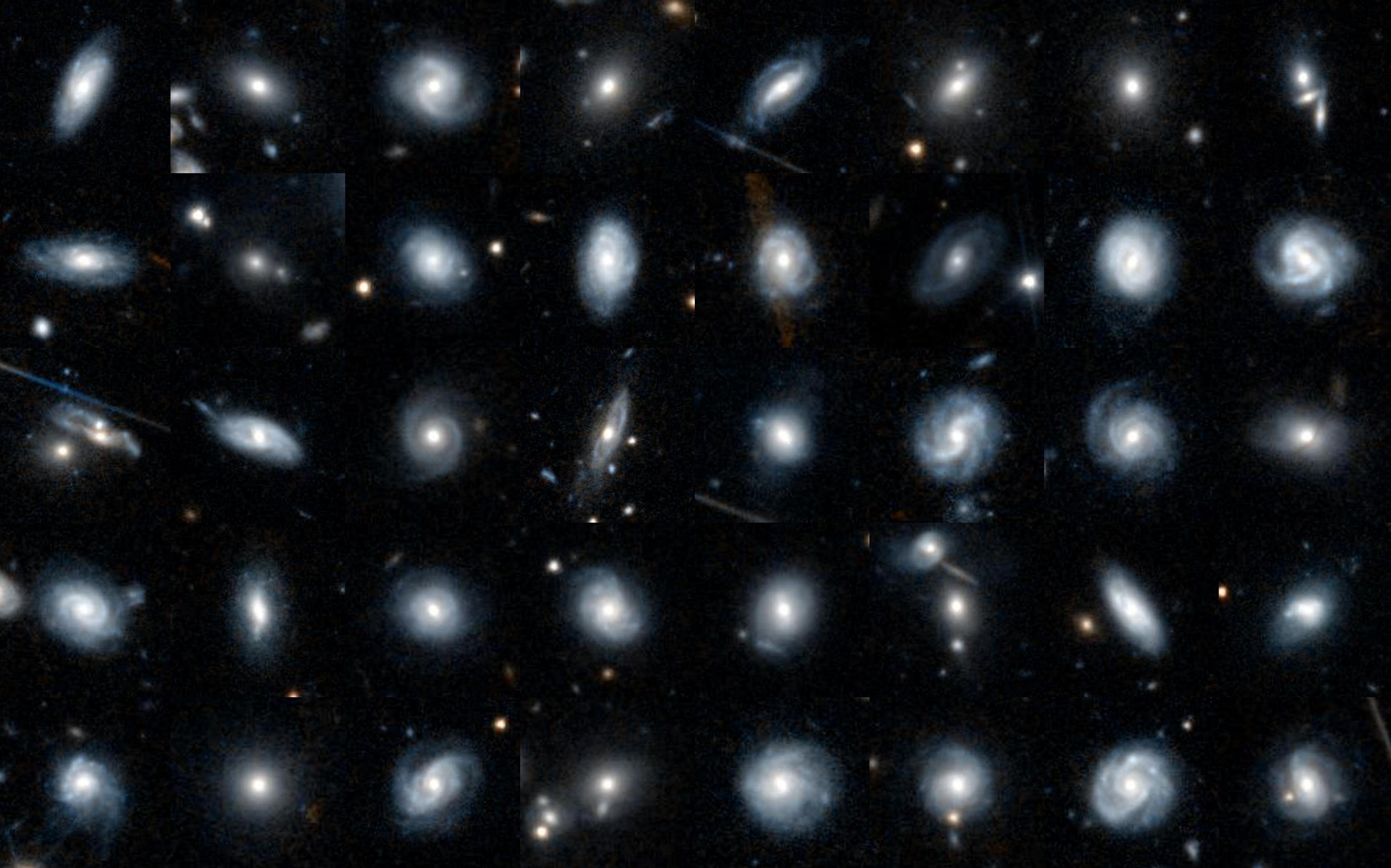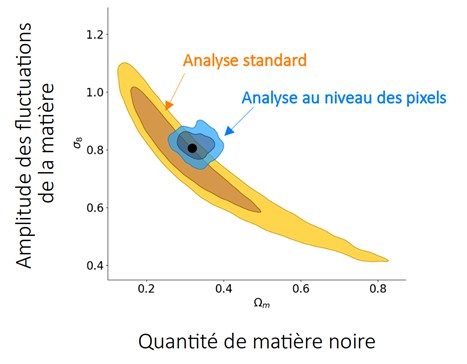Follow us on Google News (click on ☆)
Natalia Porqueres, an astrophysicist in the astrophysics department at Irfu, is developing new data analysis techniques to extract information from the cosmological observations of the Euclid mission (a space observatory launched in July 2023 for a 6-year duration) whose primary goal is to understand the "dark sector" of the universe.

Euclid will measure the distorted shapes of billions of galaxies to study the composition of the Universe and the formation of cosmic structures.
CREDIT: ESA/Euclid/Euclid Consortium/NASA
To fully exploit the potential of these datasets, very precise analysis techniques will be required.
The OCAPi project will develop cutting-edge methods to optimally exploit the weak gravitational lensing data from the billions of galaxies in the Euclid space telescope survey. This innovative technique runs gravitational simulations within a statistical framework and compares them to the observed gravitational lensing maps pixel by pixel.
"Unlike standard analyses, which compress data and inevitably lead to a loss of information, OCAPi will analyze the lensing maps pixel by pixel, without any data compression. This ensures that we capture all the information contained in the data, which maximizes accuracy and strengthens our ability to distinguish cosmic signals from systematic effects" explains Natalia.

The pixel-level approach provides stronger constraints than standard techniques.
Copyright: Porqueres et al 2024.
By capturing all the information contained in the data, this method provides the most precise possible constraints on cosmological parameters. The concept validation demonstrated that pixel-level analysis reduces marginal errors on cosmological parameters by up to a factor of 5 compared to standard techniques.
This approach also provides probabilistic maps of the matter distribution at different cosmic times, making dark matter visible and opening a new pathway for testing physics using the large-scale structures of the Universe.
By maximizing the scientific return from one of the most powerful datasets cosmology will have for decades, OCAPi will advance our understanding of dark energy and provide a digital twin of the Universe to study the formation and evolution of cosmic structures.